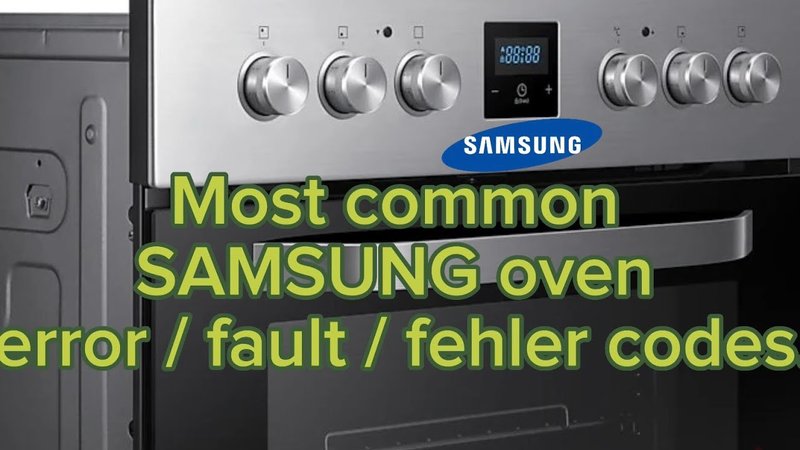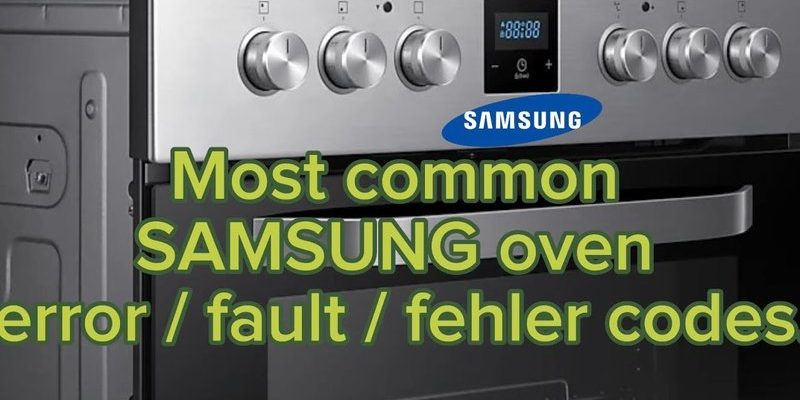
Imagine you’re all set to cook a delicious meal, you switch on your Samsung oven, and suddenly, it flashes an unfamiliar error code: “LE”. You’re probably thinking, “What on earth does that mean?” Don’t worry, you’re not alone. Many Samsung oven and range owners have encountered this puzzling message. This error code can seem frustrating, but it’s essentially your oven’s way of telling you something isn’t quite right.
Error codes, like “LE”, are communication tools designed by manufacturers to indicate specific problems. In everyday terms, think of them as your appliance waving a mini red flag to get your attention. It’s like getting a warning light in your car—it might not be a full-blown emergency, but it means something needs a closer look. Understanding these messages can save you time, money, and ensure your cooking adventures don’t come to an abrupt halt. Let’s dive deeper into understanding what causes this error and how you can address it.
What Does the Error Code “LE” Mean?
So, what’s the deal with the “LE” error code? In simple terms, this error typically indicates a problem with the lock mechanism of your oven’s door. Just as it sounds, this issue revolves around the door lock system, an essential feature primarily for safety reasons. You wouldn’t want the door flying open during a self-clean cycle, right? This code lets you know that the oven’s lock isn’t functioning correctly. It’s like trying to start a car with the parking brake on.
In many Samsung ovens and ranges, the lock mechanism is vital, especially during high-temperature operations like the self-clean cycle. When the lock doesn’t engage or disengage as expected, the “LE” message pops up. Imagine trying to secure a door with a jammed bolt—the lock might not work no matter how hard you try. The same principle applies here. The device senses something amiss, and rather than risking further complications, it stops and alerts you.
Understanding the mechanics behind this can make troubleshooting easier. The lock is usually controlled by a small motor or solenoid. Over time, this mechanism might wear out or become misaligned, much like an old door that starts to stick. The “LE” code is your cue to take action. Some folks interpret it as a call for a simple reset, but often there’s more to it. Knowing what to look for can save you a lot of hassle.
Common Causes of the “LE” Error Code
The first and perhaps most common cause of the “LE” error is wear and tear. Just like any other mechanical part, door locks can degrade over time. Think of it like a well-used book with pages that start to fall out—it happens with frequent use. Similarly, repeated opening and closing, especially during high-heat cycles, can lead to misalignment or failure of the locking mechanism.
Another potential culprit is a power surge. Electrical components are sensitive, and unexpected voltage spikes can cause the lock motor to malfunction. Consider a power surge as a jolt of electricity that can upset the delicate balance of your oven’s operations. It’s not unlike a sudden gust of wind that slams a door shut—sometimes things just don’t work the way they should afterward.
And then there’s obstruction or debris. Sometimes food bits, especially after intense cooking sessions, can get lodged in the lock area, preventing it from functioning properly. It’s akin to having a pebble stuck in your shoe—it’s small, but it can cause a significant annoyance. Regular cleaning and maintenance can often prevent this issue from occurring in the first place.
How to Address the “LE” Error Code
Now that you know the common causes, you might be wondering, “What now?” Well, the first step is to reset your oven. Unplug the appliance or turn off the circuit breaker for a few minutes, then power it back on. It’s like rebooting a computer—sometimes that’s all it takes to resolve minor glitches.
If resetting doesn’t work, take a closer look at the lock mechanism for any obvious obstructions. Carefully inspect the area around the door latch for any debris, much like you’d check your shoe for that pesky pebble. If you spot anything, gently clean it out, but be careful to avoid damaging any components.
For consistent issues, it might be time to call in a professional. Think of it like visiting a mechanic for car troubles—sometimes, expert intervention is needed. A technician can assess whether the lock motor or other components need replacing, ensuring your appliance is back up and running smoothly.
Preventing Future “LE” Errors
Prevention is key, and a little maintenance can go a long way. Regularly cleaning your oven, especially around the door latch, can help ward off those annoying “LE” codes. It’s like brushing your teeth to prevent cavities—simple, regular care makes a big difference. Pay attention to any unusual noises or difficulties when opening or closing the oven door, as these might be early signs of a problem.
Additionally, avoid slamming the oven door. Treat it gently, much like you would a fragile glass door, to prevent unnecessary strain on the lock. If you live in an area prone to electrical surges, consider investing in a surge protector for your appliances. It might seem like overkill, but it’s a small measure for some solid peace of mind.
Finally, staying aware of how your oven operates can help you catch issues before they become serious. Familiarize yourself with the manual and keep an ear out for anything unusual. Just like you notice when your car’s engine sounds off, being attuned to your oven can help you address problems before they escalate.
With these strategies, you’ll not only handle the “LE” error code effectively but also help prevent it from reoccurring.
